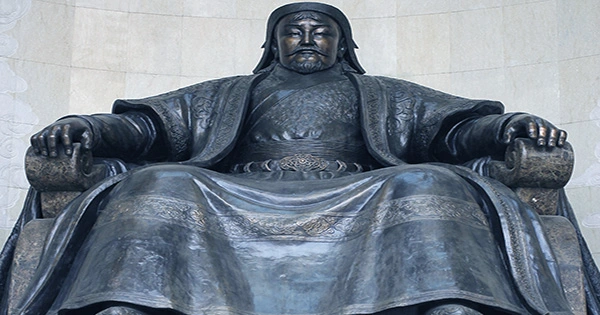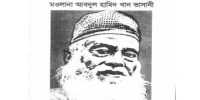Genghis Khan was without a doubt one of the most outstanding figures in global history, whether you love him or hate him—and there are many reasons for both. Temüjin, as he was originally known, was born into a small nomadic clan close to Lake Baikal. He developed into the man who united Mongolia and ruled over an empire that stretched from the Adriatic Sea to the eastern limit of China.
Despite all of that, he is still most well-known today for boning.
You’ve probably heard that a remarkably high proportion of the population is descended directly from the legendary Genghis Khan. Is it real, though? Are there actually homeopathic Hordes all around us? Or is this just another inevitable result of mathematics, like having a Charlemagne connection?
This fact was discovered almost two decades ago, in a ground-breaking historical genetics study from 2003. Researchers were shocked to discover that roughly one in 12 men on the continent shared an uncommon Y-chromosomal lineage, one that they claimed likely originated from Genghis Khan when DNA samples from 16 ethnicities in Asia were analyzed.
Why were they so certain? Since they couldn’t just simply take a cheek swab from the man, they had to rely on historical and scientific hints to fill in the blanks.
As a result, it is not plausible to assume that the unique Y-lineage is the result of simple natural population growth. According to the researchers, “If this spread were due to a general population growth, we would expect to find multiple lineages with the same characteristics of high frequency and presence in multiple populations, but we do not.”
The Y-chromosome lineage was not discovered by chance, according to statistical analysis; the likelihood of that happening was one in ten-octoseptuagintillion. Because there was no terminology for such a large number, we had to construct it from Latin roots. If you want to try writing it down, it is one followed by 237 zeroes, so use a large piece of paper.
What else could it be if it wasn’t chance? The outcome of one ridiculously attractive dude who walked the Mongolian steppe all those years ago? Once more, it’s feasible but extremely unlikely, the researchers concluded. “Therefore, it is necessary to hunt for alternative explanations,” they said. “The small number of genes on the Y chromosome and their specialized activities provide few opportunities for selection.”
They then turned to a different kind of genetic pressure, which may be even more powerful in humans than in biology.
One of the 23 co-authors of the study, geneticist Spencer Wells, told National Geographic at the time, “This is a clear [demonstration] that culture has a very major impact on patterns of genetic variation and variety in human groups.” It is the first instance in which a single genetic lineage has increased to such a tremendous amount in just a few hundred years due to human culture. Simply put, Genghis Khan – and his sons and grandsons after him – were seen as “genetically fit” not because he was particularly powerful or skilled at hunting, but rather because he was Khan.
His forces frequently massacred entire populations, destroying the gene pool that could have produced future rulers. However, and this is crucial, the familial line continued to dominate major portions of Asia as late as the middle of the 19th century.
In other words, based on a combination of logic, numbers, and common sense, that ancestor was very probably Genghis Khan. The DNA line revealed that approximately 8% of men in the former Mongol empire and consequently about one in 200 men globally have a single male ancestor.
According to what we know, the Khan had more than enough chances to give rise to an estimated 16 million offspring. He took six more wives over the course of his life: Yesugen and her sister Yesui, Khulan, Möge Khatun (technically a concubine, but who’s counting), Juerbiesu, and Ibaqa Beki. He married his first and principal wife, Börte, at the tender age of nine, which sounds awful, but records state that they didn’t live together “as man and wife” for a further seven years.
According to tradition, he also kept up to 500 concubines, many of them were princesses and noblewomen from conquered tribes and kingdoms, and fathered a similar number of offspring. Even though this narrative is well-known, it cannot be verified since according to Mongol tradition, Genghis only acknowledged his four sons with Börte as legitimate heirs, and the identity of his other offspring, including the five daughters Börte gave birth to, were lost to history.
However, the late Mongol historian David Morgan stated in 2003 that it was “absolutely feasible” that the Khans would have had such a large family. It was noted that Tushi, Genghis’ callipygian-named eldest son, had 40 sons all by himself, and “it’s very evident what they were doing when they were not fighting,” the speaker remarked.
Even though the Khan’s legacy is very prolific, it is not unrivaled. Another Y-chromosomal lineage was discovered in eastern Asia in 2005, and it was detected in about one in every thirty men sampled. While this is not as many as Genghis Khan’s descendants, it is still a significant amount.
The researchers determined that this lineage originated roughly 500 years ago, during the Ming-Qing transition, a period of seismic political change in China.
We hypothesized that both the historical record and the genetic record may have contained information about the events that led to the spread of this lineage, according to the study.
Even though the Khan’s legacy is very prolific, it is not unrivaled. Another Y-chromosomal lineage was discovered in eastern Asia in 2005, and it was detected in about one in every thirty men sampled. While this is not as many as Genghis Khan’s descendants, it is still a significant amount.
The researchers determined that this lineage originated roughly 500 years ago, during the Ming-Qing transition, a period of seismic political change in China.
Even though the Khan’s legacy is very prolific, it is not unrivaled. Another Y-chromosomal lineage was discovered in eastern Asia in 2005, and it was detected in about one in every thirty men sampled. While this is not as many as Genghis Khan’s descendants, it is still a significant amount.
The researchers determined that this lineage originated roughly 500 years ago, during the Ming-Qing transition, a period of seismic political change in China.
Even though the Khan’s legacy is very prolific, it is not unrivaled. Another Y-chromosomal lineage was discovered in eastern Asia in 2005, and it was detected in about one in every thirty men sampled. While this is not as many as Genghis Khan’s descendants, it is still a significant amount.
The researchers determined that this lineage originated roughly 500 years ago, during the Ming-Qing transition, a period of seismic political change in China.
We hypothesized that both the historical record and the genetic record may have contained information about the events that led to the spread of this lineage, according to the study.
We hypothesized that both the historical record and the genetic record may have contained information about the events that led to the spread of this lineage, according to the study.
We hypothesized that both the historical record and the genetic record may have contained information about the events that led to the spread of this lineage, according to the study. The Qing imperial nobility, a hereditary class made up of male-line descendants of Nurhaci’s paternal grandfather Giocangga (died 1582), dominated the [Qing] dynasty and had [more than] 80,000 official members at the time of the dynasty’s demise.
Once more, the researchers discovered proof of this societal pressure favoring the Giocangga genetic lineage over other genetic lineages. They claimed, “The nobility were exceedingly privileged; for instance, a ninth-rank noble received 11 kilos [24 pounds] of silver and 22,000 liters of rice annually and maintained several concubines. As a result, a social mechanism was created that would have increased the specific Y lineage that Giocangga and Nurhaci carry and caused it to expand among a select group of populations. We contend that this ancestry belonged to the Manchu people.
As many as one in five men were found to carry the genetic signature in 2006, when researchers discovered another conspicuously extensive Y-chromosome lineage that this time extended from the Middle East to the western coast of Ireland.
Which exceptionally fruitful ancestor gave rise to this third lineage? He is described as Niall Nogalach, or Niall of the Nine Hostages, in the legend that has developed around the study. This king is thought to have lived in the fifth century and is credited with founding the Irish U Néill dynasty.
The conclusion of this study is not without controversy, and one of the researchers behind it told the New York Times that he was “as surprised at finding evidence that Niall existed as he would have been to learn that King Arthur had been real.” Nevertheless, it is a pretty alluring origin myth if you have Irish ancestry.
And those are only the lineages with names associated with them. In populations all around Asia, researchers discovered 11 very potent Y-chromosome lineages in 2015: the Giocangga and Khan lineages, as well as nine other lineages, descended from unidentified ancestors who lived between 2100 BCE and 700 CE. The research was able to offer a few candidates for these fertile founders based on world history and ancient politics, but ultimately their identities are likely to remain a mystery.
However, none of these mega-patriarchs produced anything even near to Genghis Khan’s productivity, at least not in our opinion. Since we don’t actually have any DNA from Genghis Khan, there is one issue with claiming that 16 million people are his direct descendants.
Finding these connections is intriguing. Chris Tyler-Smith, an evolutionary geneticist and principal author of the original 2003 paper, said: “We achieved it using very indirect lines of reasoning, and you could try and do that with each of these lineages. The discovery of Genghis Khan’s tomb remains at some point is what I really wish for.
Fact-checkers have verified the accuracy of every “explainer” article at the time of publication. To maintain the information up to date, text, pictures, and links may be modified, removed, or added at a later time.














